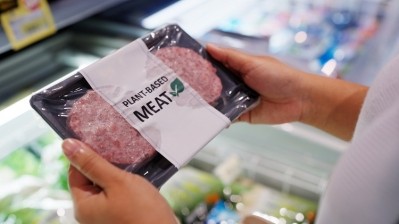'Not only philosophy': Farm to Fork Strategy promises ‘real’ change to European regulatory landscape

The Farm to Fork strategy (F2F) is a European initiative that is ‘at the heart’ of the European Green Deal, according to the EU. It aims to make food production more sustainable, so that it has either a positive or neutral environmental impact; it aims to prevent the loss of biodiversity; it aims to ensure that everyone has access to safe, sustainable, and nutritious food; and it aims to ensure food is affordable, and that food production fosters competition and free trade.
According to Katia Merten-Lentz, founder and partner at legal firm Food Science Law & Partners, the F2F will have a profound impact on regulation.
“It's a very ambitious project,” Merten-Lentz told delegates at FoodNavigator’s Positive Nutrition Summit in central London last week. “The target...is to collaborate more generally speaking to transition to a sustainable food system...through access to safe and affordable food.”
Defining nutrient profiles
The F2F strategy includes a ‘two-fold approach’ to nutrition, focusing on nutrient profiling and front-of-pack labelling.
Nutrient profiles are thresholds for the amount of certain ingredients, such as fats, sugars, and salts, that are allowed in foods. The aim of F2F is to establish these thresholds – they don’t yet exist.
The definition of a nutrient profile, Merten-Lentz told us, was established in 2007, but has not yet been implemented.
“If you are curious, and if you if you go to this, if you dig into this regulation, you will first find the definition of a nutrient profile. Secondly, you will see that we've been expecting, and we've been waiting for, the adoption of this definition . . . since January 2009. So, we can say that 14 years for is a bit too much.
“To be honest, it's not because we haven't asked ‘with your permission, why and please do something’. The answer was always ‘yes, we are working on it’. But they are still working on it.”
Merten-Lentz believes, however, that this year will be the year in which the definition is implemented. From here on, claims that food manufacturers can make in regard to health on the front of pack will change.
Nutrient profiles in action
Once defined, nutrient profiles will set clear restrictions on what retailers can claim. “The Commission has announced . . . that they will set the threshold of nutrients above which nutrition and health claims are or will be restricted.
“This is perfectly to the image of the nutrient profile. So concretely . . . it means that it will no longer be possible for non-healthy food… to get a positive message or . . . claim something too attractive they do not deserve regarding the nutrient profile.”
Lobbyists in affected industry sectors, suggested Merten-Lentz, are not happy. “Imagine,” she said, “from one day to another, a sector in the food industry will be told that technically they will not be allowed anymore to bear any health or nutrition claim.”
This lobby, she suggests, is why it has taken so long to implement the definition of nutrient profiles. The reason for the delay is “not because the President is too busy or lazy, not at all,” but because of the lobbyists.
Front-of-pack labelling harmonisation
The second aspect of the Farm-to-Fork strategy, suggests Merten-Lentz, is front-of-pack labelling. “Several years after the UK, the European Commission has decided to have decided to harmonise the front-of-package labelling.”

For years, the EU allowed countries to set their own front-of-pack labelling initiatives. “That is not anymore admissible because it's a barrier.” It’s a restriction to the free circulation of goods, and it’s very confusing to the customer, she suggested. “So, the European Commission has decided to put in place a unique mandatory system in the EU.”
Nutri-Score was considered a potential option for an EU-wide harmonised labelling scheme, because it was already used across a wide range of European countries including France, Belgium, the Netherlands, Germany and Spain. However, not everyone is happy with the implementation of Nutri-Score across the EU. It has faced strong opposition, notably from Italy.
It is currently unknown which system the EU will adopt, whether it will be Nutri-Score or another system. “So, this is a big suspense, and I will keep you posted if you want,” Merten-Lentz added.

Whether in nutrient profiling or in front-of-pack labelling, the F2F strategy reforms have the potential to make significant impact, Merten-Lentz stressed.
“Be vigilant, be careful because all this is not just a pure principle, not only philosophy, it will be concrete and have a significant impact . . .you will have for sure to adapt and to adjust your labelling.”
























